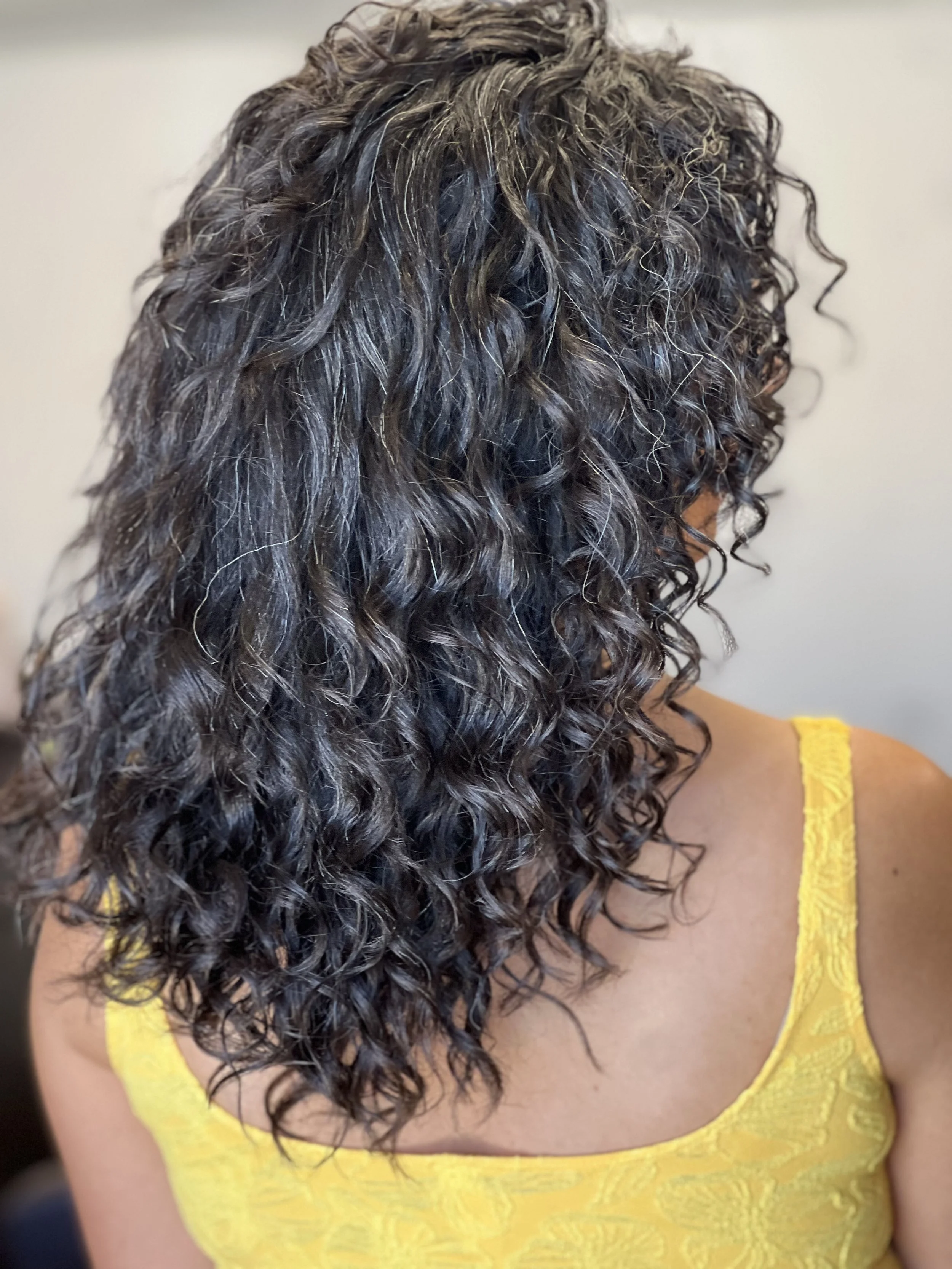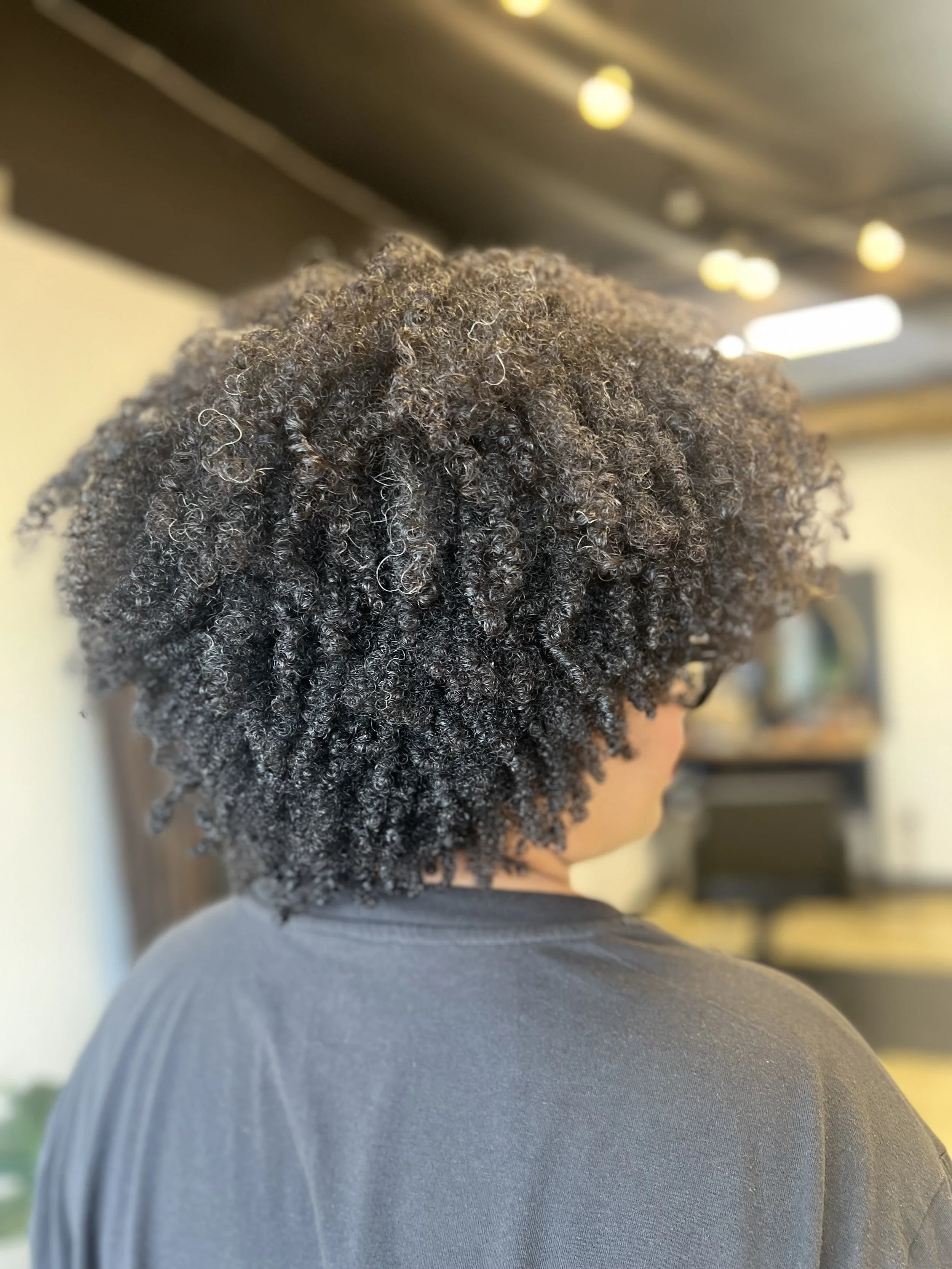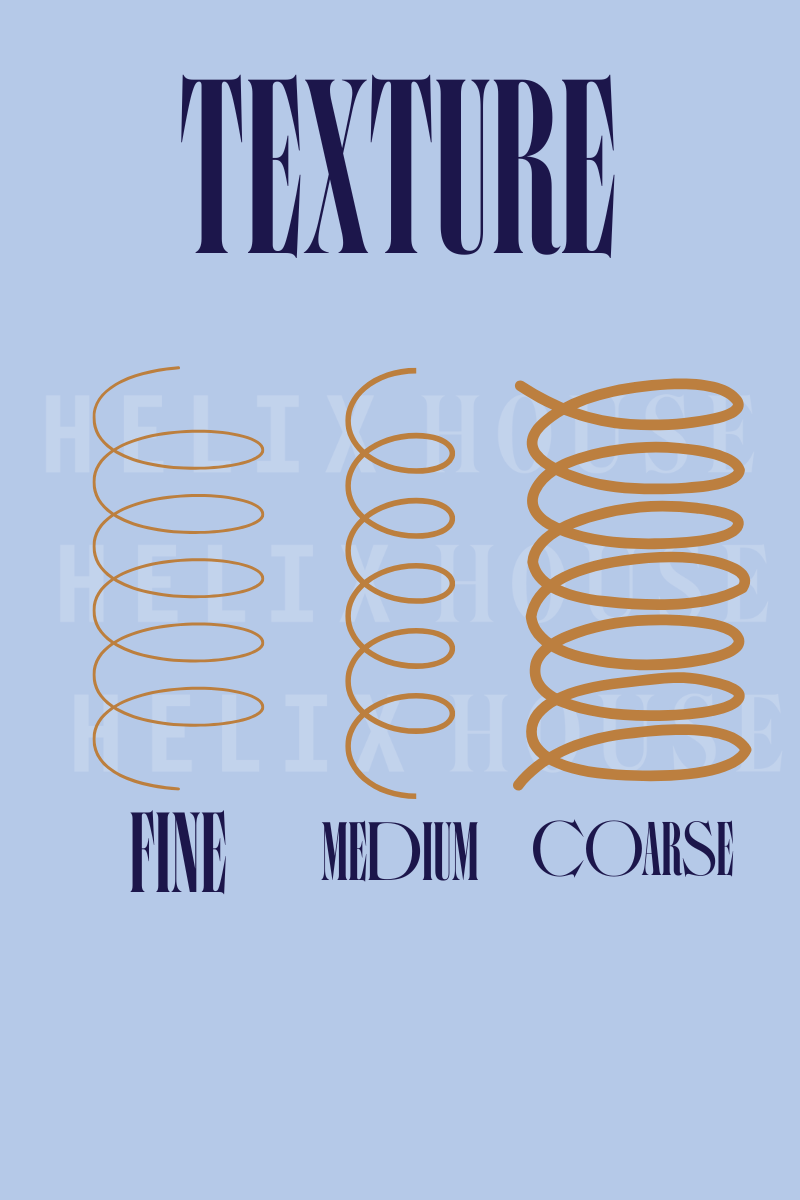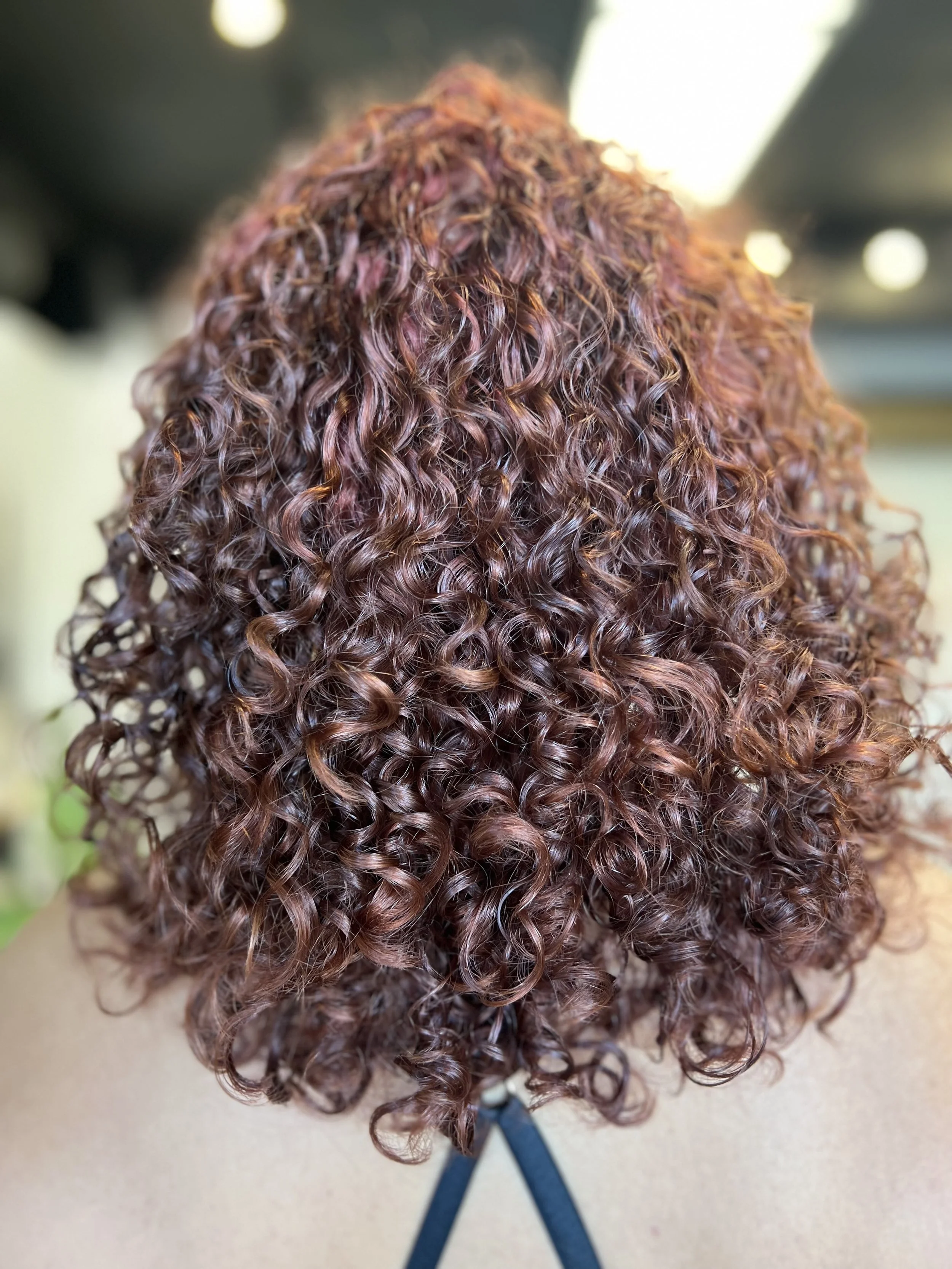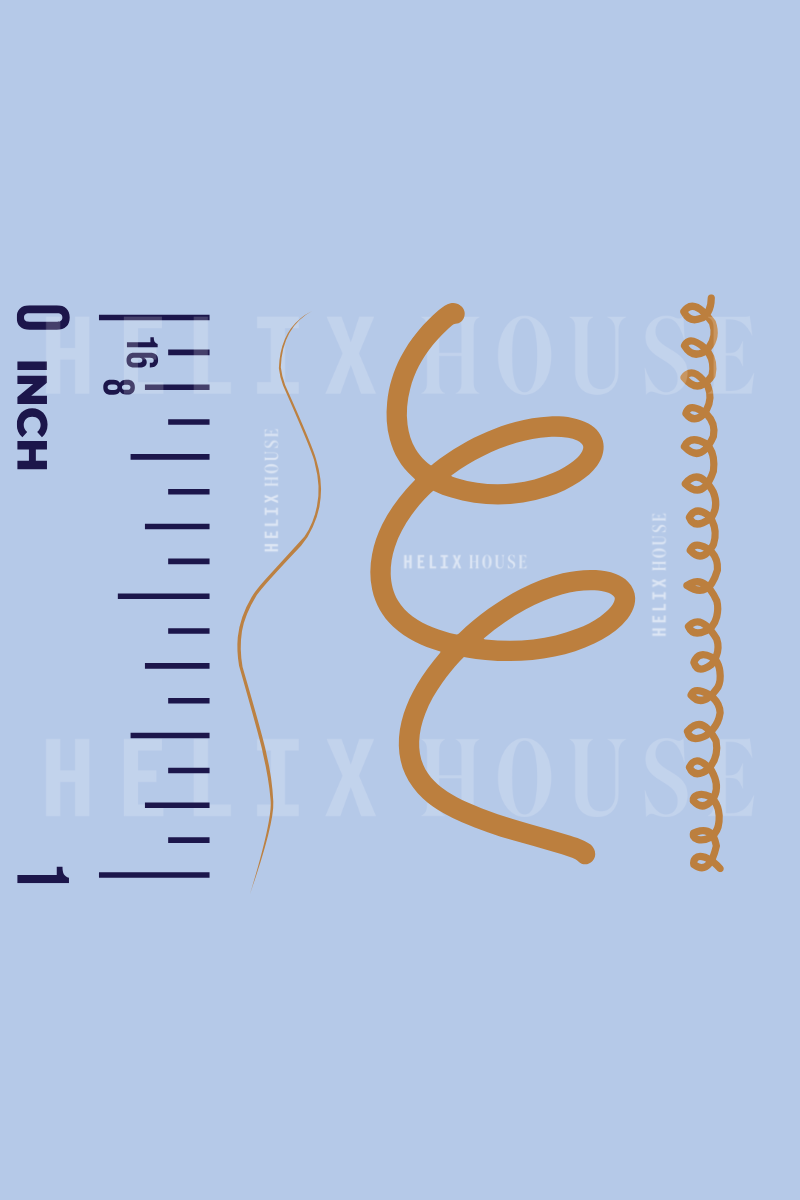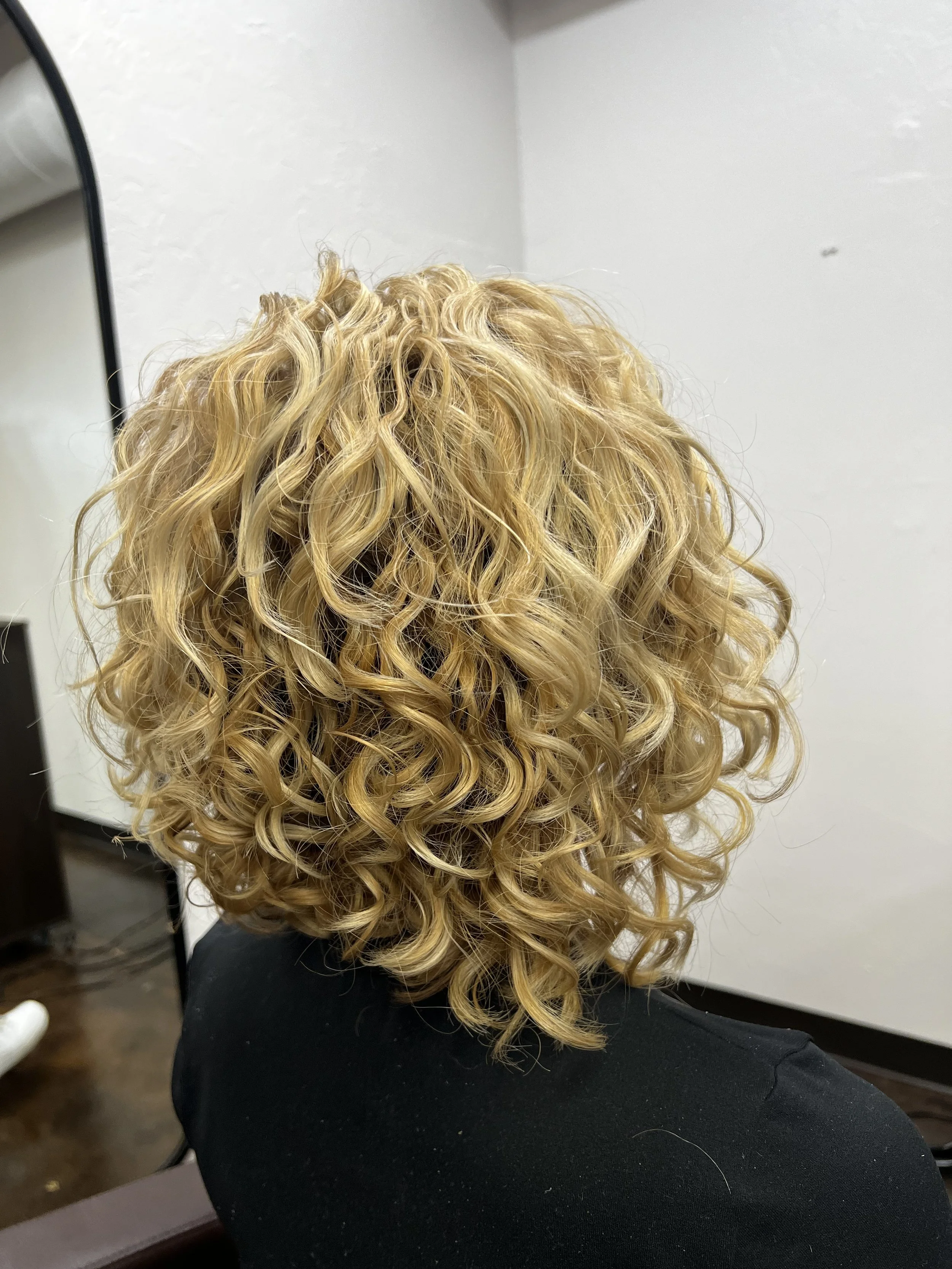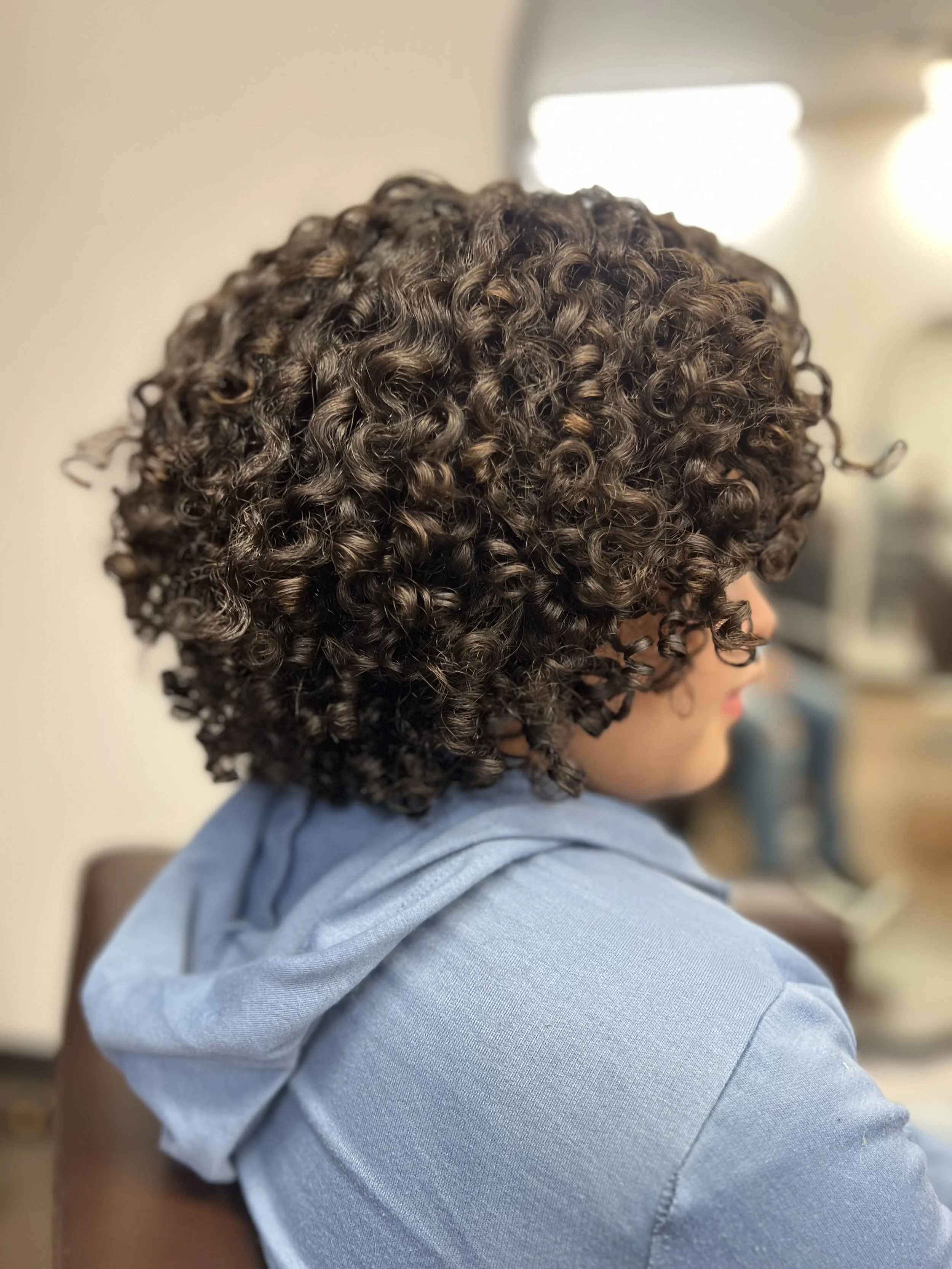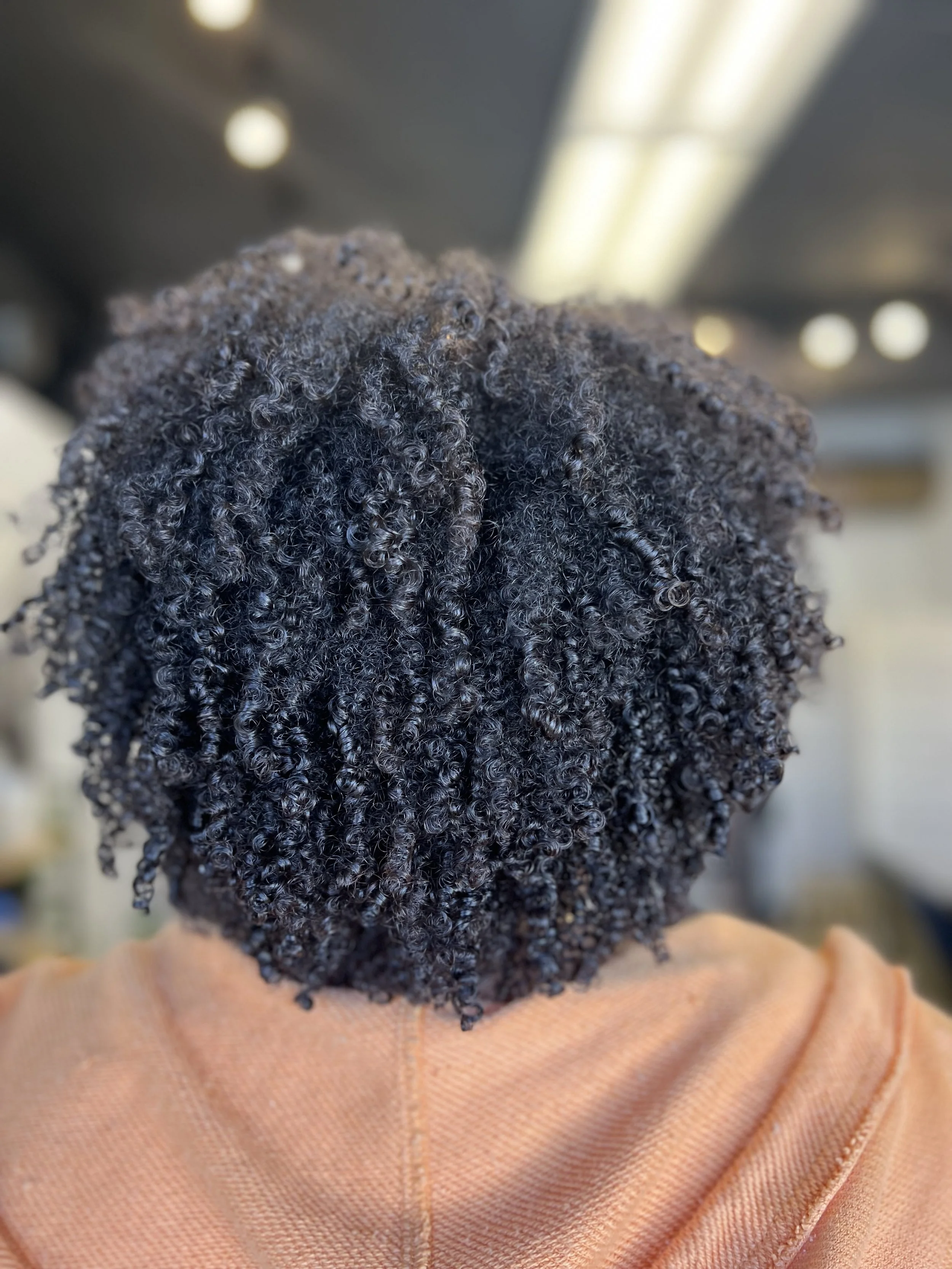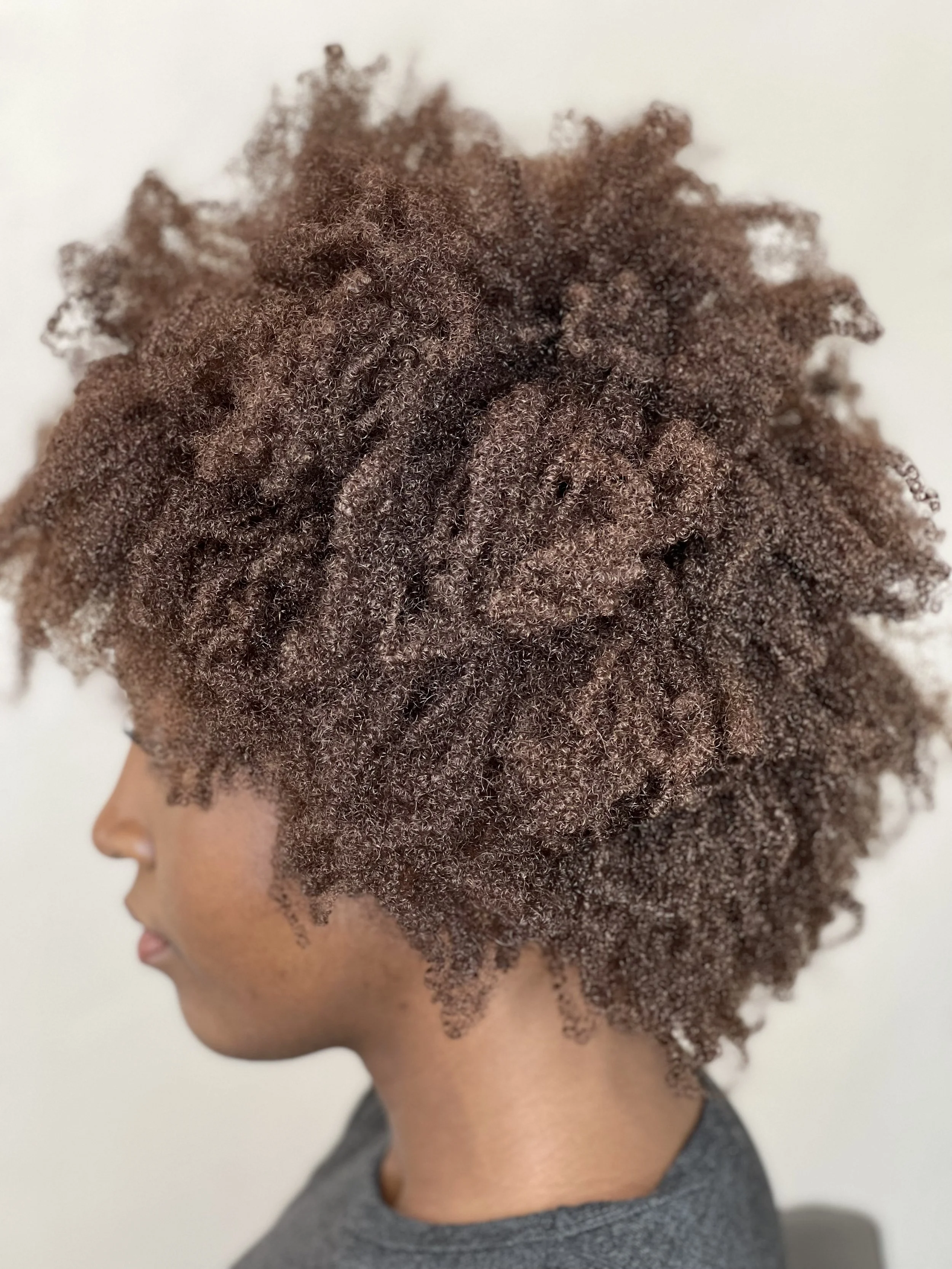Identify your curl type
No two curl patterns are the same, and most people have 2-3 types across their head. Understanding your curl pattern will help you to choose the right hair care products and routines. At Helix House Salon, we’re committed to giving you the proper knowledge to care for your curls both in salon and at home. When you visit the salon, our team of curl specialists will assess your hair to offer personalized guidance based on our foundational curly hair practices to ensure you get the best curl results. In this post, we’ll briefly cover the widely used Andre Walker Hair Typing System along with an introduction to how we’ve adapted this concept to better suit our curl approach. This blog post is all about getting you more familiar with your curls and its characteristics to help you find your curly hair type. We’ll also define the most common buzz words surrounding textured hair such as porosity, texture, and density. Why is knowing your curl type important? Accurate curl identification is key. Mislabeling your texture can lead to ineffective products and unmet expectations. Your Curlfriends at Helix House Salon are here to help guide your curl understanding so they can thrive. Let’s dive in. Common Terms
For the context of this blog and the novice understanding we’re assuming you have, we’re going to keep the term definitions simple and easy to understand. These terms will be useful as we go along. We’ve composed a list of common terms that we think you’ll find meaningful to your overall clarity and understanding around curly hair concepts and community: Shrinkage-
how much or how little your hair retracts when moisture is present either in the air or directly applied. Shrinkage can be caused from the moisture in products or the moisture in the air on a humid day. curls, coils, and kinks will incur more shrinkage.
Pattern-
the shape of an individual hair strand
Straight pattern
S pattern
Loop patterns
Spiral patterns
Coil patterns
Zigzag patterns
Wavy patterns
Curly patterns
Kinky patterns
Curly/Curls/Curl-
these terms can be used to refer to all shapes of individual strands collectively, or the specific individual hair strand. Some language examples used in a sentence:
“I love the curly hair community”“Embracing curls has become more mainstream now more than ever”“I have curls and not waves”“Unlike kinky hair that zigzags, my strands curl”
Texture-
two separate meanings:
Refers to all shapes of individual strands collectively. In this context it can be used interchangeably with the terms curls/curly/curl, or pattern.
The size of the individual strand.
Texture types, refer to the picture below
Fine- fine loops, curls, and coils will have more definition
Medium- patterns usually define well
Coarse- small coarse waves, loops, curls and coils will have less definition
Porosity-
how much or how little within a time frame the hair strand absorbs water externally. porosity affects curl definition.
Low porosity- absorbs water slowly. will appear shiny and healthy
Normal porosity- absorbs water at an even rate. moisture balanced. curls are bouncy and defined
High porosity- absorbs water really fast. patterns will look frizzy, dry, and dull.
Density-
how many strands of hair on the scalp per square inch.
Low density- The scalp is easily visibly alongside the part. Hair lacks volume and lays flat
Medium density- The scalp is somewhat visible alongside the part. Hair looks balanced and natural
High density- The scalp is hard to see along the part. Hair looks thick and very full. The hair has plenty of volume.
Knowing these terms will help you to further understand your hair. Please feel free to scroll back up for reference as we dive deeper into the reading.The Familiar AnDre Walker Hair Typing System
You’ve likely seen the well-known system created by hairstylist Andre Walker, now accepted as the curly standard in the curly hair world. His system divides hair into four types: straight (1), wavy (2), curly (3), and kinky (4). Each type includes subcategories a, b, and c to highlight subtle differences in texture. While helpful, this chart can be confusing-especially for those new to embracing their curly hair-due to its repetitive numbers and letters. Inspired by this system and our curl knowledge, we’ve developed a simplified system to make the curl analysis process easier for you. You can say this Helix Houses “unpopular opinion” to a much well known system. Our numbers approach helps to avoid misclassification of curls, which can lead to poor product choices and unmet expectations. Understanding your curl type gives you the confidence and clarity essential for effective hair care.The Helix Hair Pattern System- HHP
We prefer to use a number system with an emphasis on the specific patterns and sizes. Each shape is further defined by being loose or tight.1- straight (hair with no bend at all)2 and 3- waves4 and 5- loops6 and 7- spirals8 and 9- coils10- zigzags
With this system, we find that the textures are not miscalculated because each texture has a unique number. The number is treated as having its own specific properties, unrelated to other numbers. Grouping them in larger groups can help with a general estimate of the textures. But the tightness and looseness between each pattern is where the distinction matters for product usage and outcomes. Tighter strands respond differently than looser strands. What signifies loose or tight patterns? The amount of space between the bends within the pattern. This is true for all patterns as visually noted in the picture below. So, giving each strand an individual number will help you focus on how your number responds and its specific characteristics. We believe this is the ultimate reason for curly typing in the first place, right? What good is it just know what your curl type is anyhow? We want to know it for the sake of choosing products and understanding curly hair behavior. A description of the curls and their characteristics
First and foremost, we use the terms “curl/curly/curls” “pattern” or “texture" to refer to all hair categories that are not straight. So please do not get confused with the language and pay close attention to the context in which the words are used. If you see one of these terms being used, we are referring to the collective unless otherwise noted. Moving on. Each pattern has its own distinct characteristics. The more turns or overlaps the hair strand takes within an inch will yield more volume. Please refer to the pic below. This is why highly textured hair will always yield the most volume. Curly cuts will also affect volume and the way your pattern lays. This is why the right curly cut will ensure your curls encompass the overall silhouette you desire. An expert in curls will guide you in the right direction considering your curl characteristics. Now let's go through each grouping to help you better understand the characteristics that help to differentiate it from the others.Waves- Wavy hair strands are numbers 2 and 3
This hair pattern when assessed by the strand makes an S shape. Waves are the loosest pattern of the groupings (straight, waves, loops, spirals, coils, and kinks). Wavy hair has the least amount of texture definition. Wavy hair, because of its lack of definitive form, will eventually fall flat in style and appear to be straighter as the days go by. These strands have the least volume when compared to the other patterns and lay flatter on the head. However, if the hair is dense, it will appear to have more volume. The waves are generally even from the root to the end. Heavy products will relax this texture. Steer clear of gels. A leave-in is your friend. Loops- Loopy hair strands are numbers 4 and 5
These ‘tighter’ S shapes will yield a slight S overlap creating a loop. Because of the loops and the looseness of them, we do not consider 4’s and 5’s to be spiral. Loops present like spirals initially with proper curling technique and the right products, but as the style wears, the hair will become flatter resembling a wave. After styling, loops usually have more volume towards the end of the hair. This is another characteristic that separates it from waves. As said before, waves are even in volume from scalp to ends. Loops are not. Loops love foam (get yours here) and maybe a light water based gel. Curls- Cury hair is identified as numbers 6 and 7.
Curly hair strands create a more uniformed pattern. It is usually defined visually by closely overlapping loops creating spirals. Coil textures create a similar spiral pattern, however, the overall spiral pattern of curly hair is significantly larger in diameter than those with coily patterns. This is one characteristic that separates curly hair from coily hair. Both curly hair and coily hair have the same pattern, but the sizes differ. Curly hair is tighter than loops, but looser than coils. This texture is the most defined, and the easiest to define of all groups. It needs little product to define like foam (get yours here) and loves a good water based gel. Coils- Coily hair strands are 8 and 9.
Coily hair is very similar in shape to curly hair as they both create overlapping spirals. However, coily hair has a much smaller tighter spiral in diameter, hence the name. The spiral pattern's tightness compared to that of curly hair can be seen in the picture. This hair pattern is tighter than curly hair but more defined than kinky hair. Because of the consistent definition and small diameter, this hair is obviously compact, UNLESS the hair is less dense. The coil is visible in an 8, while the 9 will yield a smaller tighter coil shape when examined closely. The shape of a 9 will mimic the tightness and diameter of a pen spring. Coily patterns are frizzier than curly patterns. Coily hair needs more moisture and benefits from leave-in moisturizers, foams (get yours here), and heavier water based gels, UNLESS the hair has low density, normal-low porosity. This pattern will benefit from oils or butters. Kinks- Kinky strands are identified as number 10
Although not as prevalent as the other textures, kinky patterned hair is the most rare and distinctive texture of all of them all. The pattern is in fact a tight zigzag and only visible by looking at the hair strand up close. Like coily hair patterns, kinky hair is generally the most compact and dry due to the nature of the structure. Like straight strands, kinky hair strands are in a league of their own. Kinky strands are the frizziest of all strands and the most compact of all strands. They are usually the driest naturally and prone to breakage because of the shape. Kinky hair will ‘feel’ coarse because of its zigzag shape, however it’s usually fine in texture. This pattern benefits most from a combination of moisture, butters, and heavy water based gels. We hope you’ve been encouraged to love your curls even more with newfound clarity. Please feel free to share what you’ve learned or took away from the reading. As always, we appreciate your support in taking the time to read what we love to share about- curls.
When you’re ready for more hands on curl education, book your next appointment with us at Helix House Salon located in the Western Ave District of Oklahoma City, OK with one of our curly hair specialists. We can’t wait to meet you!
As always, we hope you feel seen, heard, and loved today.
Until next time,
Your Curlfriends @ Helix House Salon

